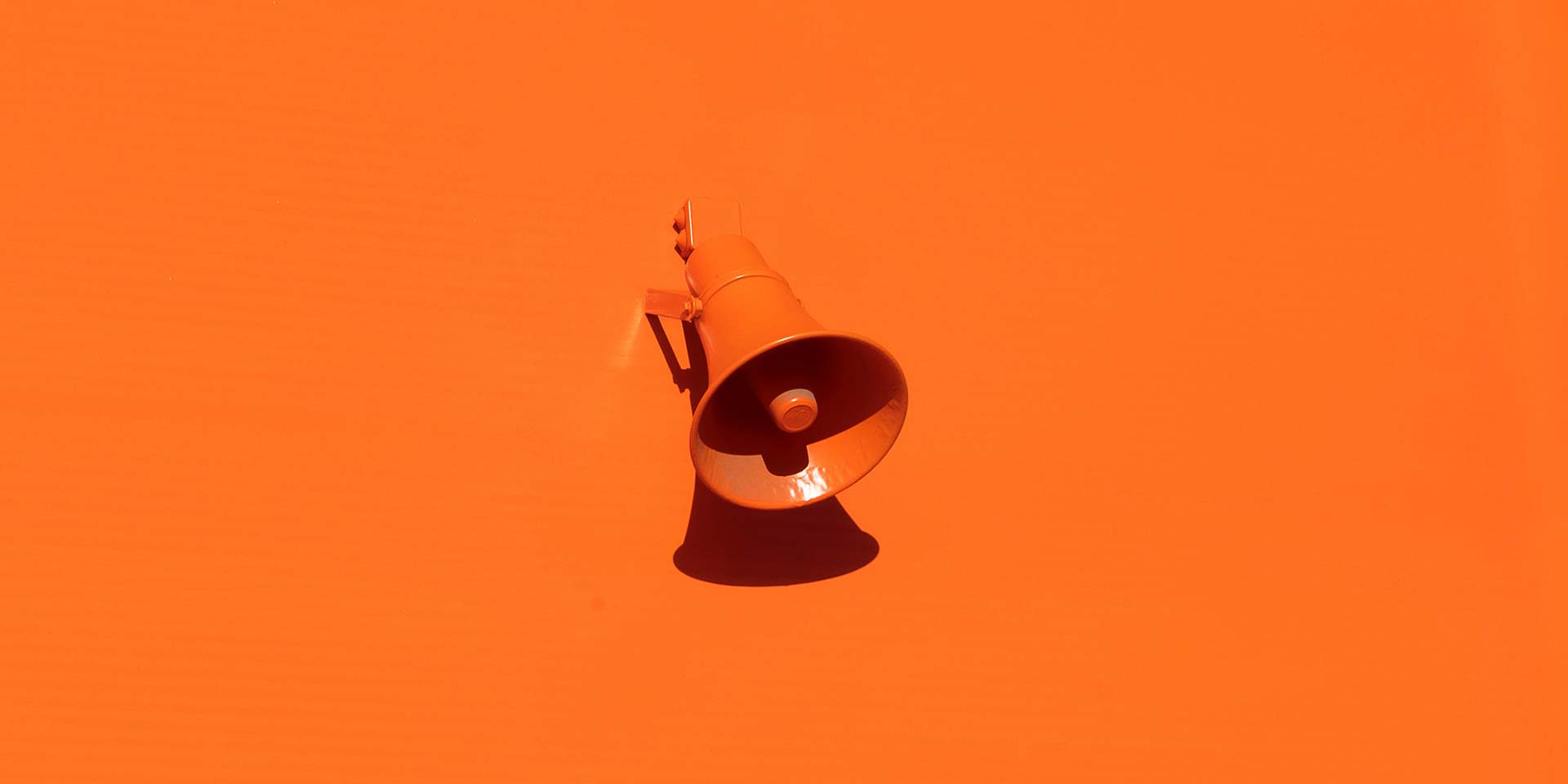Our skin is a protective barrier between our bodies and the outside world. By wearing clothes we enhance this border. In this post I have a closer look at art works that explore and challenge this border between our insides and our surroundings. All four works discussed below are wearable and make use of sound to examine the different possibilities of newly created experiences of our skin.
The many biological processes carried out by our body are essential for staying alive. Commonly the sounds produced by these bodily activities are quite silent. Our heart beats, blood runs through our veins and our guts process food. Body Speaker (2010) by Karina van Heck makes these sounds of our bodies audible. She designed several straps each with a sound capturing membrane. These membranes are placed on your skin, and in this way you can listen to your own heart beats, your own swallowing and all the sounds your guts are making. These sounds stay private, and are only audible for the wearer of this equipment, since they are amplified through a pair of headphones. There are volume knobs for every signal. In this way you can decide yourself how loud you want to hear the different sounds. You adjust the volume level of the different sounds produced by your body similar to how you would adjust sounds in a musical composition. Your body sounds turn into musical sounds, and you can create your own perfect mix of your body sounds.
Whereas in Karina van Heck’s work we cross the border and listen to what is happening behind the skin, Touch Amplifiers (2018) by Özgür Erkök Moroder and Steffi Weismann explore the outer sounds of the skin, mainly caused by touch. They are not only interested in amplifying touch but also in modifying it into an experience alienated from our everyday experience of touching bodies. To achieve this their skin is modified by wearing a costume made from sand paper. Their smooth skin is replaced by wearing costumes made of rough and scratchy sand paper. Every touch and every movement is making a scratchy noise. By attaching contact microphones to the sand paper this rubbing sound is amplified through loudspeakers. As Özgür mentioned: “The question was how do we compose our body image and body language with the sounds that this image creates – in an ordinary way. Ordinary because our body conditions and image is already pretty extraordinary.” And it is indeed the extraordinary sound each ordinary movement produces that makes the touches we make everyday with our skin suddenly perceivable.
Pauchi Sasaki’s Speaker Dress (2014) is a skin which produces sound. The dress is made of 96 small loudspeakers. When wearing this dress her whole body becomes a moving sound sculpture. As Pauchi comments herself on the project: “The image that inspired the Speaker Dress is the somatic process of a woman eating the outside world, interiorizing and digesting the external soundscape, and returning the sounds back into the environment. This project focuses on the relationship between the human body and the space, recognizing the skin as a symbol of boundary and filter between objectivity and subjectivity.” (quote from https://www.pauchi.com/self-designed-instruments) Pauchi wears this dress during performances while playing the violin or using her voice. Her violin and voice sounds are sent to a computer, and the processed sound is sent back to the speaker dress. The dress thus reconstructs the sound of the performer who is wearing it: the performer is dressed up in a sonic costume, that transforms all sounds she produces.
InThe Intimate Earthquake Archive (2016) visitors experience an earthquake on their skin and body. Sissel Marie Tonn developed this project together with Jonathan Reus, Marije Baalman and Carsten Tonn-Petersen. The work is based on data of earthquakes happening during the last thirty years in Groningen (Netherlands), which are caused by gas extraction and thus man-made earthquakes.
Core samples of sand stone are hanging in the space. There is a radio transmitter in each of these core samples. These transmitters diffuse a composition based on different seismographic data of earthquakes through long wave radio signals. The radio waves can be received by the visitors through a special jacket, containing a radio receiver and several embedded surface and bone conduction transducers. These transducers do not disseminate sound through air, but vibrate mechanically directly on the body of the visitors. By getting closer to a sand stone core sample, the vibrations send by that radio transmitter will get louder. By walking around between the different core samples the visitor experiences the different earth quakes. As Sissel Marie Tonn describes: “The compositions take advantage of the multiple types of vibrations that the vests allow the visitors to feel. For example with bone-conduction you have the sensation of sound coming from within the body, and from no particular direction, whereas with haptic transduction of the skin, it’s really a tactile experience. […] The vibrations move across the skin similarly to how the earthquakes moved across the land, and are intended to inspire a ‘deep listening’ experience within the body.” (quote from: https://we-make-money-not-art.com/a-bodily-experience-of-man-made-earthquakes/)

This is the right site for anybody who really wants to understand this topic. Annadiana Byron Mona
This is my first time visit at here and i am really happy to read all at single place. Nancee Bruce Jephum
Definitely, what a fantastic site and enlightening posts, I definitely will bookmark your blog. All the Best! Evey Massimo Cimah